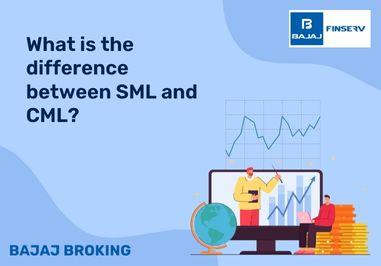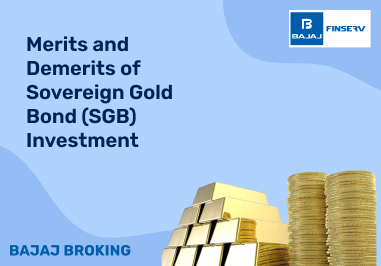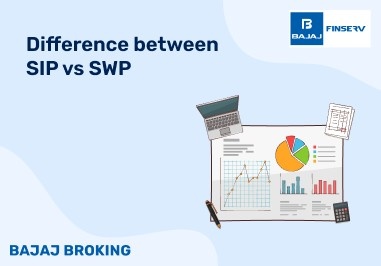Mutual funds have become a preferred investment choice for both experienced investors and beginners in India, offering a structured approach to wealth creation. With their growing popularity, the Assets Under Management (AUM) of the Indian mutual fund industry surpassed ₹ 67,25,450 crore [1] as of January 2025, reflecting strong investor confidence. However, making the right mutual fund investment requires more than just following trends—it demands careful evaluation of market conditions, financial goals, risk tolerance, and macroeconomic factors. A solid grasp of stock market basics further helps investors navigate fund selection, ensuring their investments align with long-term objectives. This article delves into the key factors affecting mutual fund decisions to understand how they influence mutual fund investments.
Understanding mutual fund investments
A mutual fund is a financial vehicle that pools money from multiple investors to invest in stocks, bonds, or other securities. Managed by professional fund managers, mutual funds offer the benefits of diversification, risk management, and liquidity. Investors can choose from various types of mutual funds, including equity funds, debt funds, hybrid funds, and index funds, based on their risk tolerance and investment objectives.
Investors seeking high returns can opt for equity mutual funds, which primarily invest in stocks. These funds are ideal for long-term investors who can withstand market fluctuations. On the other hand, debt mutual funds are suitable for those looking for stable returns with lower risk, as they invest in government securities, corporate bonds, and other fixed-income instruments. Hybrid funds combine equity and debt components, offering a balanced investment approach.
Another key aspect of mutual fund investments is the mode of investment. Investors can choose between Systematic Investment Plans (SIPs) and lump sum investments. SIPs allow individuals to invest small amounts regularly, reducing market timing risks and encouraging disciplined investing. Lump sum investments, however, involve a one-time large investment and can be beneficial when markets are undervalued.
Key factors influencing mutual fund investment decisions
There are several factors that influence mutual fund investment decisions for investors. We have outlined them below:
- Risk appetite: Investors should assess their ability to tolerate market fluctuations before investing in mutual funds. Equity funds carry higher risk, whereas debt funds offer stability. High-risk investors may allocate more funds toward equity, while conservative investors should focus on debt instruments.
- Investment horizon: The duration for which an investor plans to stay invested influences fund selection. Long-term investors may prefer equity funds, while short-term investors might choose liquid or debt funds. A longer horizon allows investors to ride out market volatility and benefit from compounding.
- Fund performance: Analyzing past returns helps in understanding how the fund has performed in different market cycles, although past performance is not a guarantee of future results. Investors should compare the fund’s performance with its benchmark index and peer funds.
- Expense ratio: The cost of managing a fund affects returns. A lower expense ratio is preferable as it ensures that a larger portion of earnings goes to the investor. Investors must consider whether the higher cost of active funds justifies the potential for better returns compared to passive funds like ETF investments.
- Fund manager’s expertise: The experience and track record of the fund manager play a crucial role in ensuring effective portfolio management. Analyzing a fund manager’s previous performance, strategy, and ability to handle market downturns can provide insights into their competence.
- Portfolio composition: Understanding the fund's allocation across sectors, stocks, and bonds helps assess its potential for growth and risk level. A diversified portfolio reduces risk while enhancing return potential.
- Mode of investment: Investors can opt for SIP (Systematic Investment Plan) or Lumpsum Investments based on their financial capability and investment strategy. Using tools like SIP Calculator and Lumpsum Calculator can help determine potential returns.
External factors impacting mutual fund investments
The external factors affecting investment in mutual funds are listed below:
- Market conditions: The overall performance of the stock market influences mutual fund returns. A bullish market generally leads to higher NAV (Net Asset Value) growth, while bearish trends may lead to temporary declines in portfolio value.
- Economic factors: Inflation rates, GDP growth, and interest rate policies impact investment performance. A high inflation rate erodes purchasing power and affects real returns, while economic growth positively influences equity investments.
- Government policies and regulations: SEBI guidelines and tax regulations affect mutual fund investment strategies. For instance, changes in capital gains taxation and dividend taxation influence investor preferences.
- Sectoral trends: Market trends in industries like IT, pharmaceuticals, and banking impact the performance of sectoral mutual funds. Investors must monitor sector-specific economic developments before investing in thematic or sectoral funds.
- Global market trends: International market trends and geopolitical developments also affect mutual fund investments in India. Foreign investments, currency fluctuations, and global recessions play a role in shaping domestic market conditions.
Behavioral factors affecting investment decisions
Behavioural factors refer to the investment approach and philosophy of the investor. The behavioural factors affecting investment decisions are outlined below:
- Herd mentality: Investors often follow market trends without conducting independent research. This can lead to overvaluation or undervaluation of certain assets.
- Overconfidence: Excessive belief in one’s investment skills may lead to risky decisions, such as ignoring diversification and taking speculative bets.
- Loss aversion: Fear of losses prevents investors from taking calculated risks. Many investors exit during downturns, missing out on potential recoveries.
- Anchoring bias: Investors tend to rely heavily on initial information rather than current market conditions, leading to suboptimal investment choices.
- Short-term thinking: Impatience and desire for early profits can lead to frequent portfolio changes, reducing long-term gains. Investors should focus on compounding and systematic investing.
Strategies for making smart mutual fund investment decisions
As an investor, you need to understand the various factors affecting mutual fund investments listed above. But apart from that, you also need to draft strategies to manage risks and make informed decisions. Here’s a list of strategies mutual fund investors can leverage when making investment choices:
- Define investment goals
Setting clear investment goals is the foundation of any successful investment strategy. Investors should determine whether they are investing for short-term needs, long-term wealth creation, or retirement planning. The time horizon, risk appetite, and expected returns should align with these objectives. For example, individuals saving for a child's education in the next 10–15 years might opt for equity mutual funds, while those seeking stable income post-retirement could prefer debt mutual funds. Defining goals ensures disciplined investing and prevents impulsive decisions driven by market volatility. - Diversify investments
Diversification is a crucial risk management strategy that helps investors balance potential losses and gains. Investing across different asset classes, such as equity, debt, and hybrid funds, ensures that a downturn in one sector does not drastically impact the entire portfolio. Investors should also consider diversification within asset classes by choosing funds with exposure to different sectors, geographies, and market capitalizations. For example, while large-cap funds provide stability, mid- and small-cap funds offer higher growth potential. Diversification enhances returns while reducing risks. - Monitor fund performance
Regularly tracking fund performance is necessary to ensure investments remain aligned with financial goals. Investors should compare their fund’s performance against its benchmark index, peer funds, and overall market conditions. Reviewing annualized returns over multiple years provides insights into how the fund performs in different market cycles. Additionally, factors like fund manager changes, asset allocation shifts, and expense ratio variations should be monitored. If a fund consistently underperforms, switching to a better-performing alternative may be necessary. - Use investment tools
Technology has made investing easier, with multiple tools available for better decision-making. Investors can utilize SIP Calculators to estimate the future value of their systematic investments or Lumpsum Calculators to determine expected returns from one-time investments. These tools help assess investment growth potential based on contribution amounts, duration, and expected returns. Financial planning tools also assist in rebalancing portfolios, optimizing asset allocation, and ensuring tax-efficient investing strategies. - Consider alternative investments
While mutual funds are a great investment vehicle, investors should also explore other financial instruments to enhance portfolio resilience. Options like ETFs provide diversification at lower costs, while investing in bonds can provide steady income with reduced volatility. Additionally, they can also consider government-backed retirement schemes like the NPS scheme that offers tax-efficient retirement savings. Incorporating alternative investments ensures a well-rounded approach to wealth creation, allowing investors to balance growth, stability, and liquidity needs.
Common mistakes to avoid in mutual fund investments
Most investors make the following mistakes when investing in mutual funds:
- Not researching funds properly
A common mistake among investors is choosing mutual funds based on past performance alone. While historical returns provide some insights, they do not guarantee future success. Investors should analyse key metrics such as the fund’s expense ratio, portfolio composition, risk-adjusted returns, and fund manager expertise before investing. Relying on thorough research rather than market hype or recommendations ensures that the chosen fund aligns with investment goals and risk tolerance.
- Ignoring expense ratios
The expense ratio represents the cost of managing a mutual fund and is deducted from overall returns. Higher expense ratios can significantly impact long-term gains, especially in actively managed funds. For instance, a fund with a 2% expense ratio will deduct 2% from the investor's annual returns. Investors should compare expense ratios across similar funds and consider opting for direct plans, which have lower costs than regular plans with distributor commissions.
- Timing the market
Many investors attempt to enter and exit the market at the "right time" to improve profits. However, predicting market movements consistently is nearly impossible. Instead of timing the market, investors should focus on time in the market. Systematic Investment Plans (SIPs) help mitigate market volatility by averaging purchase costs over time, ensuring steady investment growth regardless of short-term market fluctuations.
- Overlooking asset allocation
Asset allocation is crucial in determining an investment portfolio's risk and return potential. Investing too aggressively in equities without balancing it with debt funds can expose investors to excessive volatility. Similarly, an overly conservative approach may lead to lower returns. A well-balanced allocation between equity, debt, and alternative investments ensures optimal risk-adjusted returns. Periodic rebalancing helps maintain the desired asset mix in response to changing market conditions.
- Frequent portfolio changes
Constantly switching funds in response to market movements can lead to unnecessary transaction costs, exit loads, and tax implications. Emotional investing driven by short-term market trends often results in poor decision-making. Instead of frequently altering investments, investors should adopt a long-term approach, regularly reviewing their portfolio and making adjustments only when necessary to align with financial goals. Patience and discipline are key to improve mutual fund investment benefits.
Conclusion
The factors affecting investment in mutual funds are multifaceted, ranging from personal financial circumstances to broader economic conditions and behavioral tendencies. Indian investors must consider these various elements holistically when building their mutual fund portfolios. By understanding these factors affecting investment decisions and approaching mutual fund investing systematically, investors can create resilient portfolios aligned with their financial goals.
Remember that successful mutual fund investing is less about finding the "perfect" fund and more about creating a well-thought-out strategy that accounts for your unique situation and the diverse factors affecting investment decisions. With proper research, disciplined approach, and periodic review, mutual funds can serve as powerful vehicles for wealth creation in the Indian context.
Disclaimer: Investments in the securities market are subject to market risk, read all related documents carefully before investing.
This content is for educational purposes only. Securities quoted are exemplary and not recommendatory.
For All Disclaimers Click Here: https://bit.ly/3Tcsfuc














